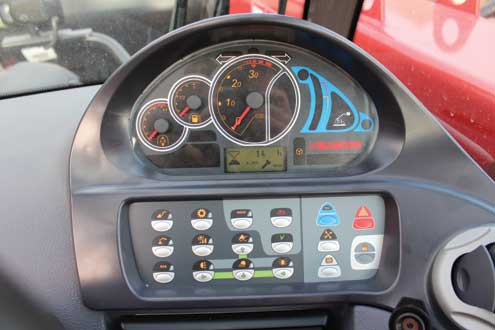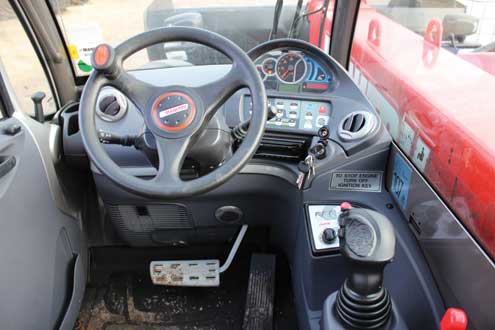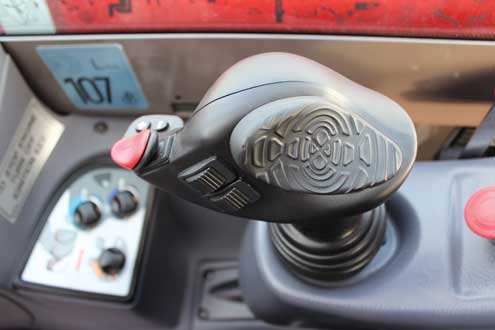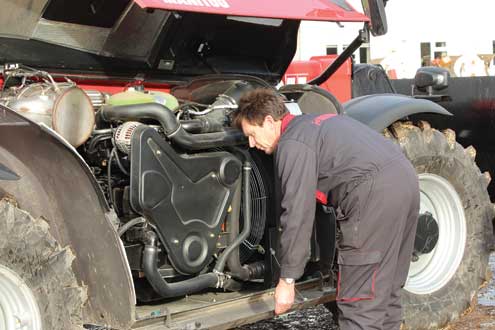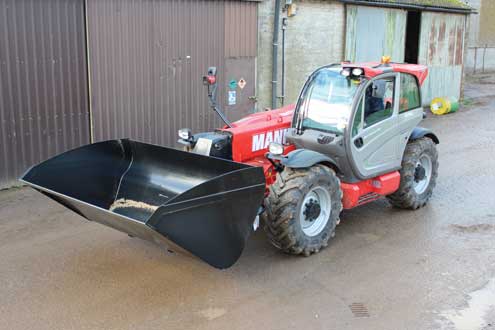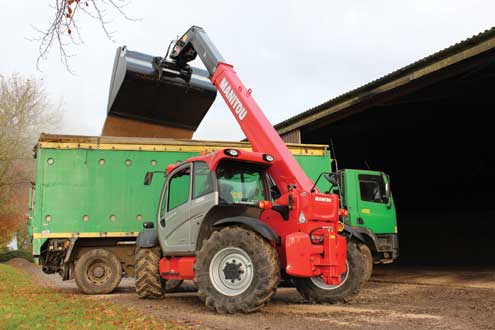Manitou MLT 840 on test
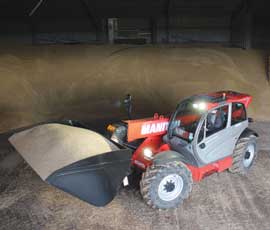
The two big hitters in the UK loader market – JCB and Manitou – have been busy this year. JCB’s pivot steers have attracted plenty of attention, while the French firm launched its arable-orientated MLT 840 telehandler in the summer.
The 840’s four-tonne lift capacity and 7.55m reach goes toe-to-toe with JCB’s 541-70. The rest of Manitou’s arable loader range sees the smaller MLT735 and beefy 845 – popular with spud-and-root farmers – sandwich the newbie.
| SPEC BOX MLT 840-137 | |
|---|---|
| Engine | John Deere Stage 3b four-cyl, 4.5 litre |
| Power | 137hp |
| Transmission | 5×3 powershift |
| Lift capacity | 4t |
| Breakout force | 5222daN |
| Hydraulics | 180-litres/min |
| Unladen weight | 8.4t |
| Turning circle | 3.98m |
| Ground clearance | 0.41m |
ENGINE
It’s pretty much new from headstock to hitch, but one of the stand-out changes is the move to John Deere engines. Most of the mid-range kit still use Perkins motors and compact equipment is powered by Kubota. Time will tell whether this change will continue through the rest of the fleet.
This is partly because Manitou hoovered up plenty of John Deere dealers when Deere’s telehandler range was mothballed a few years ago. It makes servicing and spare parts convenient for dealers and owners.
The 4.5-litre, four-cylinder engine kicks out a healthy 137hp (a 115hp version is also produced). A combination of EGR and particulate filter control exhaust gases.
There’s also a neat new cooling pack. The radiators are stacked side-by-side and protected by a pullout grille at the front to make cleaning easier. A bigger hydraulic fan can be set to automatically reverse for 15 seconds every three minutes, too.
Service access is always awkward on a telehandler. That said, the two-part engine hood makes the oil and fuel filters reasonably easy to get to. The same can’t be said of the hydraulic oil site glasses under the cab door that are almost impossible to see.
TRANSMISSION
A big selling point is the 840’s five-speed gearbox. A cluster of toggle switches allows the operator to switch from manual – where plus and minus buttons on the joystick control shifts – to auto mode on the move.
You can set the top available gear in auto mode – ideal when you’re on clamp duty – but we found manual was fine for yard work. You tend to spend most of your time between gears two and three anyway and in auto mode it can be a bit eager to get up to speed.
There are also two button-controlled operating modes:
1 Road mode, where all five gears are available and torque lockup happens at 23kph in fourth gear and 33kph in fifth.
2 Handling mode, where gears one to four are available, including an inching mode up to gear three. We liked this function, because you can rev up on the hand throttle (yes, hand throttle) and creep slowly without battling against the transmission.
CAB
The cab is 15% bigger than the 741’s, with most of the spare space in front and behind the seat. The latter forms an ideal dog bed, while a wide-opening rear window should stop your furry friend stinking out the cab.
Traditionalists might not like the one-piece door, but the electric window is more practical than a stable door and you don’t miss the glass lower half (which has a habit of getting smashed, anyway).
The snail-shell-shaped joystick also gets the thumbs up, although controlling the different functions takes a bit of getting used to. The forward/reverse finger switch is handy for shunting to and fro.
Engine temperature, fuel level and rpm are displayed on dials on the corner-mounted dash. An LCD screen the size of two postage stamps shows boom angle, forward speed and driving mode. It’s a shame it’s so small and will be hard to see once the dust has worked its way in.
MENU/SAFETY
EN 15000 regulations meant safety was pretty much top of Manitou’s design agenda.
There are three handling modes on the 840.
1. Default only allows non-aggravating movements (like lifting or retracting the boom) once the boom-out load limit is reached.
2. Bucket mode. This Manitou-designed system allows non-aggravating movements, as well as crowd and tilt of the headstock. An auxiliary service can also be operated.
3. Suspended load mode is similar to default, but derates the machine’s capacity by 10% to account for swinging loads like fertiliser bags. This mode will stay on even after restarting the loader.
Other settings accessed through menu hotkeys include boom suspension and an easy connect system – press and hold the labelled button to vent the hydraulic system before coupling/decoupling attachments.
HYDRAULICS
The 840’s hydraulics have been beefed up by 25% since the 741. The 180-litres/min load-sensing pump seems more than adequate, even when completing two operations at once. That should help keep revs and thirst down during work.
To cope with the macho hydraulics, the boom has been strengthened. It also now has a cast-iron neck, rather than welded box section, to reduce the pressure on welds.
Oil flow rate to the hydraulic couplings can be adjusted by twisting dials behind the joystick. We reckon this will prove pretty handy for grab-type work to avoid snatching at material.
Controlling the hydraulics is quite complicated (to start with, anyway). A switch near the manual handbrake directs oil either to the front or rear of the machines. When flicked forwards a diverter tap on the boom neck sends oil either to the locking pins or auxiliary couplings.
Flick the switch backwards and the hitch or rear auxiliary is controlled by the joystick-mounted roller. The lower roller controls the boom (we’d prefer these the other way around). A 10t towing capacity should make the 840 handy for picking up the odd grain trailer, too.
CONCLUSION
Top marks go to the cab and transmission. The smooth shifts in auto are ideal for road work, while manual should suit yard duties.
Any operator will have to spend time with their nose in the 840’s manual if they’re going to be able to use all the features, though.
Available now, the MLT 840 costs £76,470.

